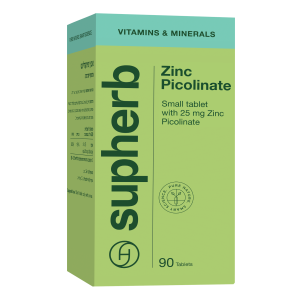- Home
- Beauty care
- Skin Pigmentation: Most Common Factors
Skin Pigmentation: Most Common Factors
- Melanin is the pigment that affects our skin tone; it is created by skin cells called melanocytes.
- The main factor for accelerating melanin production is exposure to sunlight, since it’s mostly used for protecting the skin cells from UV radiation.
- When the melanin distribution in the skin is uneven, pigment accumulates in one spot, causing pigmentation in the skin and an uneven look.

Our body changes over time and is influenced by a variety of internal and external factors. The visible changes show up with age and have to do with the loss of moisture, elasticity, as well changes in the evenness of the skin tone. Uneven facial skin tone, defined as pigmentation, is not a dangerous condition but is an aesthetic nuisance, and many women look for ways to conceal the blemishes and make them go away for a smoother skin look. What causes skin pigmentation? Some causes may be surprising.
What is pigmentation?
Pigmentation means an uneven skin tone. The word “pigmentation” in fact refers to different conditions in which skin tone changes. Blemishes that are lighter in color than your natural skin tone are called “hypopigmentation,” while darker blemishes are called “hyperpigmentation” and are the most common ones. This article focuses on hyperpigmentation.
Melanin: the pigment responsible for skin tone
Melanin is the main pigment that affects our skin tone and is produced by cells called “melanocytes”. An interesting fact is that the quantity of melanocytes is actually the same in people with light and dark skin tones, but melanocytes are more active in darker skin and therefore produce consistently more melanin. Sunlight exposure is the main factor effecting the production of melanin since it’s meant to protect the skin cells from UV radiation. This is the reason we tan during prolonged exposure to the sun, and as time goes by the melanin excess break down and the tan fades away. When the melanin pigment is equally distributed, the skin will have an even tone. When the melanin is unevenly distributed for various reasons, it results in a concentration of the pigment in certain areas, causing an uneven skin appearance and blemishes.
Main causes for pigmentation
Facial pigmentation has several causes and is a condition more common among women. The main reasons have to do with sunlight exposure and hormonal changes. Skin pigmentation might also appear after skin trauma such as a burn, an injury, or healed acne. There are medications that increase the sensitivity of the skin when exposed to sunlight, but there’s also a genetic component.
Hormonal pigmentation: when hormones and sun meet
Hormonal pigmentation, also called “Melesma”, is expressed by the appearance of brown or grey spots on the face and is common among women during their fertile years, mostly between the ages of 20-40. Hormonal pigmentation occurs due to increased melanin production in specific areas in the face: above the upper lip, cheeks, nose bridge, and forehead. Hormonal pigmentation is also called a “pregnancy mask,” since it is common among pregnant women, but it might also appear due to a use of a hormonal-based contraception, such as birth-control pills, intrauterine device, contraception patches, or fertility treatments. The pigmentation blemishes appear due to the effect of the female hormone on the cells of the skin producing the pigment, combined with UV radiation exposure. 75% of women might develop Melesma during pregnancy, with a higher frequency in women with dark skin. Melesma also appears in 33% of women using hormonal-based contraceptives.
Sun blemishes: the skin remembers
Sun blemishes are created as a result of exposure to sunlight radiation, also known as “age spots.” These age spots mostly appear after the age of 50, due to the exposure of the skin to UV radiation throughout the years, and they’re more common in people with lighter skin. UV radiation exposure accelerates the production of melanin in the skin, which as mentioned, is meant to protect our skin from the harmful radiation. In addition, exposure to sunlight radiation also causes the production of free radicals in our skin, which also accelerates the production of melanin. Like in every skin-related phenomenon, a dermatologist should check you in order to make sure that these are indeed sun blemishes and not a condition that might need medical treatment.
Post Inflammatory hyperpigmentation: when a healed wound leaves a mark
Post Inflammatory hyperpigmentation (PIH) is caused due to an inflammation in the skin and manifests in brows ports that remain after the skin has healed. These pigmentation marks can also appear after any other type of skin trauma, such as an injury, a burn, facial hair removal, or acne healing. There’s also a heightened tendency for it to appear in darker skin and it might get worse due to sunlight exposure; this situation is common in both men and women and can appear in all ages. This is caused by the effects of inflammatory outcomes on the cells producing the melanin pigment. The increased melanin production at the affected area causes the blemish.
Did you know? Blue light exposure causes pigmentation
Everybody knows that prolonged exposure to sunlight damages facial skin. What many of us don’t know is that we get the same radiation from other sources around us, even inside the house. We’re constantly exposed to blue light in modern life, emitted from the electronic devices and lighting at our home, at the office, and in the car. Out computer screens and phone monitors are the main devices that directly expose us to blue light. Blue light has a short wavelength that causes accumulated damage and accelerates skin aging. Blue light causes increased production of free radicals and damages the collagen and elastin fibers. The accumulated effect, over time, accelerates the skin’s aging process, creating pigmentation blemishes and worsening existing conditions.














